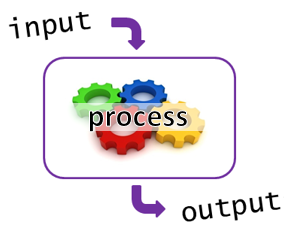“My service has the best quality”, “We offer the best quality service to our customers”, “Our service is guaranteed by quality”. Have you ever heard that? Most probably you have. Quality is a word that we hear in everyday and in relation to many different fields, from buying a new TV, hiring a new internet provider, or even playing sports.
What about the Air Navigation Industry? Quality of service has been a subject for several years now and perhaps more related with Aeronautical Information Management (AIM), Safety Management Systems (SMS) and Flight Procedures Design (FPD), not to mention Service Level Agreements (SLA), but is that all?
Let’s develop a little further:
What is Quality?
Even though there are many definitions for Quality, a good starting point would be ISO’s definition:
“Degree to which a set of inherent characteristics of an object fulfils requirements.”
This means that quality depends on the requirements of what is intended to be done (Good or Service) and how we achieve these requirements. This simple sentence implies a lot, and it brings the possibility to plan, do, check, act, and plan again to fulfil our goal.

Process in Quality
Basically, a process are series of actions or steps taken to achieve a particular end.
In this way of thinking there are 3 basic phases:
- Input: Where the goods, data, service or whatever we need to produce are collected
- Process: Where the input is transformed into something new
- Output: Where the final product is presented

Let’s explore examples of this in Air Navigation Services:
- Aerodrome data is surveyed by using its own process. The data collected (output).
- This output will be an input for AIS/AIM where a new AIP will be made.
- The new AIP will be a new input for Flight Procedure Designers which will produce as an output a new Procedures and Charts.
- This Procedures and Charts will be loaded into Aircraft’s FMS and ANSP’s ATM Systems.
This chain of inputs and outputs looks perfect in theory but what would happen if one piece of data Aerodrome data surveyed had a mistake and was not detected?
Garbage In Garbage Out
There is a concept mainly used in IT which states that the quality of the input determines the quality of the output. In other words, the quality coming out is dependent on the quality of the input.
The importance of this concept remains in that what we do in Air Navigation Services has direct impact on the Safety of the Operations.
Keeping Operations Safe
There are many documents from different organizations about how safety is achieved, but they all agree on that Quality is required for a Safety Management System to work properly.
One of the most famous models used in safety is James Reason’s Swiss Cheese model.
In the Swiss Cheese model, an organisation’s defences against failure are modelled as a series of barriers, represented as slices of the cheese.
The holes in the cheese slices represent individual weaknesses in individual parts of the system and are continually varying in size and position in all slices.
The system produces failures when holes in all of the slices momentarily align, permitting “a trajectory of accident opportunity”, so that a hazard passes through holes in all of the defences, leading to an accident.
Usually, an organisation’s defences can be described in 3 categories:
- Technology
- Procedures
- Human Competence
This defences work as an input for the safety process, therefor it is fundamental to have an excellent quality on them.
How can an ANSP make sure that their input for safety will have the required quality
There are 2 basic ways:
- If Technology, Competence acquisition (training) or Procedures are contracted from another provider, make sure that the provider has at least an ISO 9001 certification and not only a “generic” specification but with a specific mention in the required process.
- If Technology, Training or Procedures will be performed in house, have these process certified.
INGENAV and Quality Certification
Ingenav has been certified in ISO 9001:2015 for its quality management system since 2016, and not just certified in a general way, but specifically in:
- Design and Delivery of Training in Air Navigation
- Consulting in Air Navigation
This means that what INGENAV does, regarding Training and Consultancy, has Certified Quality and will fulfil the customer’s requirements.
Moreover, since 2018 Ingenav is also certified as a Training Organisation for Air Traffic Control training in accordance with EU regulation 340-2015.